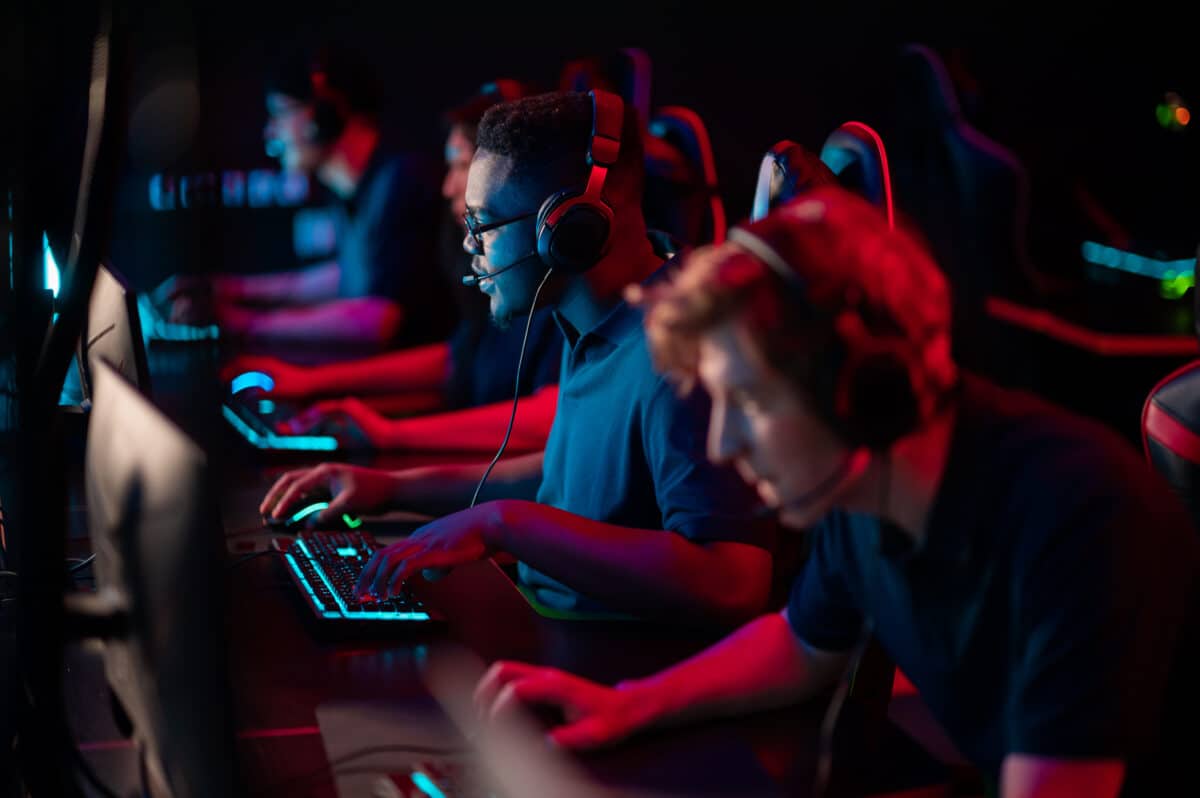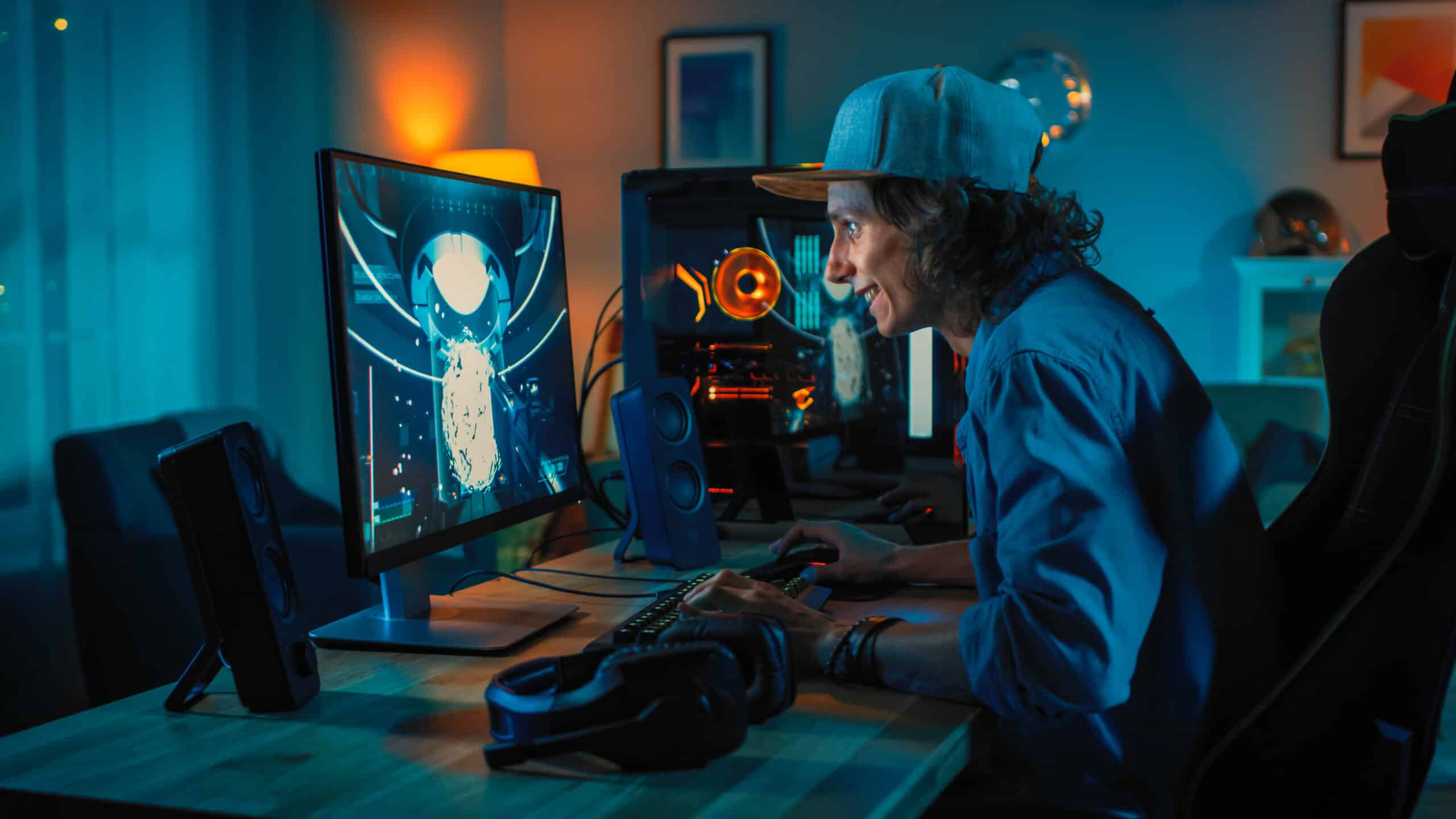FPS vs. Refresh Rate: 6 Must-Know Facts
- Having a GPU more powerful than your monitor can handle is pointless and, at worst, could cause issues like screen tearing.
- FPS and Hertz are “equal” measurements, even though they measure different things (e.g., a GPU that can run 60 FPS will work with a 60 Hz monitor).
- Upgrading both FPS and refresh rate together will improve your graphics.
- 30 FPS is a good minimum on a console, but 60 FPS is a good minimum on PC.
- Many people can’t perceive the difference between 60 and 120 FPS/Hz, and even less can tell the difference between 120 and 144 FPS/Hz.
- The standard refresh rate for most monitors, televisions, and other displays is 60 Hz.
FPS and refresh rate are probably terms you’ve heard before — maybe interchangeably — if you’ve tried to do anything relating to graphics cards or visual displays.
This could be buying a new television, checking your laptop’s specs, or even listening to ads for the PS5. Yep, FPS and refresh rates are that universal. But what are they, really?
Both of these terms refer to graphics. Higher FPS or refresh rates on a monitor or in a game will usually result in better visuals, and how high you can go is dependent on your hardware. In that sense, there are different ways to measure the same result of good graphics.
Refresh rate is defined as how many times your monitor (or whatever other display) can refresh the image on-screen. FPS, or frames per second, is actually about how many frames your graphics card can send out as frames to the display every second.
So, refresh rate is all about your monitor/display and FPS is more related to your GPU’s power. The two measures are very much related to each other, though. Your FPS can impact your refresh rate, and vice versa.
Look at it this way: Your monitor and your graphics card work together to give you great visuals. FPS and refresh rate are just two ways to measure how well each individual piece of technology is working.
With this in mind, you need to consider both FPS and refresh rate (as well as understand the differences between them) in order to get the most out of your tech set up.
Let’s take a deeper look at what they are and what their respective impacts are on graphics.
FPS vs. Refresh Rate: A Side-by-Side Comparison
| FPS | Refresh Rate | |
|---|---|---|
| Units of Measurement | FPS (Frames per second) | Hz (Hertz) |
| Can Be Improved By | Upgrading GPU | Upgrading monitor/display |
| Acceptable Minimum (PC) | 60 FPS | 60 Hz |
| Acceptable Minimum (console) | 30 FPS | 30 Hz |
| Relevant for Gaming? | Yes | Yes |
FPS vs. Refresh Rate: What’s the Difference?
Although the two terms are very similar, they each have certain features that are unique to them.
FPS (Frames Per Second)

As mentioned before, FPS is a measure of how many frames your GPU can render every second.
The graphics card is located inside of every computer and is the source of your frames. They are sent to the monitor, which is where the refresh rate will come into play.
Higher FPS will make graphics look smoother and more fluid. They can even be easier on the eyes and prevent motion sickness or nausea since higher framerates are closer to what we’re used to seeing in real life.
Rendering more frames is all dependent on how good your graphics card is. A premium GPU made for high-end gaming, like the GeForce RTX 3090 Ti, averages 100s of FPS. The AMD Radeon RX 590, on the other hand, will range between 60 to 80 FPS.
FPS can be ‘capped’ in certain applications, like in games, to make sure your frames stay consistent. Capping FPS will mean that the application has a hard maximum FPS that it can use.
Without capping, you might find your graphics jumping up to higher frame rates as your computer tries to pump out as many as it can handle. But, those higher FPS could come crashing back down to a more stable rate as processes become more intense.
If you’re bothered by your graphics stuttering every time there are lots of visuals on screen, then capping FPS might be the answer.

Refresh Rate
If the graphics card is the source of new frames, then the monitor is the recipient of them. Refresh rate dictates how often your monitor is capable of renewing the displayed image. In other words, it’s like FPS, but for the display.
Hertz (abbreviated as Hz) is how refresh rate is usually measured. Thankfully, they can be directly compared to FPS–-although the similar methods of measurement have definitely caused some confusion as to the difference between FPS and refresh rate.
High refresh rates have the same benefits as high frame rates, so they’re just as important for getting a quality visual experience. In fact, your FPS is inherently going to be capped at whatever your monitor’s refresh rate is.
Even if your graphics card can pump out 144 FPS regularly, a 60 Hz monitor can only handle 60 FPS. The result is either you get just 60 frames, or you will experience something called “screen tearing.”
This phenomenon happens when your monitor is trying (and failing) to keep up with your graphics card. It will look like certain parts of your screen are falling behind or displaying different images entirely, because that’s exactly what is happening!
A new display technology called VRR, or variable refresh rate, is increasingly available in monitors for the sake of fixing screen tearing. VRR allows the display to fix the desync between the graphic card’s FPS and the monitor’s refresh rate.
Potential problems aside, there is a standard refresh rate in use. Most displays, whether in the form of computer monitors or television screens, will use 60Hz. This is a solid rate that creates smooth visuals and is easy on the eyes.
Still, premium monitors or high-end TVs can go up to 120Hz, 144Hz, or even 240Hz.

FPS vs. Refresh Rate: What Should You Pay Attention To?
Between FPS and refresh rate, it can be confusing where you should invest your resources and what you should try to improve.
If you already have a great GPU, make sure that your monitor isn’t wasting the graphics card’s potential. The same goes for if you have an amazing monitor–-you should try and get the FPS and Hz to match up.
In the context of gaming, FPS is usually viewed as more important, but only because you can tweak it using in-game display options. Capping your FPS, for example, can fix display issues and create a more cohesive gaming experience.
Ultimately, FPS and refresh rate are incredibly important aspects of computer graphics. You need to pay attention to both metrics to achieve the visuals that you want.
Conclusion
FPS and refresh rate are two factors that impact the visual experience of gaming. As we explained above, FPS is the number of frames that your GPU renders per second. Refresh rate, on the other hand, is the number of times per second that your monitor refreshes the image on your screen. The higher the FPS and refresh rate, the smoother your gameplay will be. But, as previously mentioned, these two factors are not directly related. This means that a high FPS will not necessarily result in a high refresh rate (or vice versa). The best way to create an optimal visual experience is to have a monitor with a high refresh rate and a GPU that can render a high FPS.
The following tips will also help you get the best visual experience:
- Invest in a high-quality monitor with a high refresh rate.
- Use a powerful GPU, which will allow you to render a high FPS.
- Adjust your graphics settings to get the best balance between performance and visuals.
- Experiment with different settings to determine which create the visual experience that works best for you.
Up Next
- What is the Artemis Program? Everything You Need to Know
- History of Electric Vehicles
- Hubble vs James Webb Space: Two Telescopes Compared
The image featured at the top of this post is ©Gorodenkoff/Shutterstock.com.








